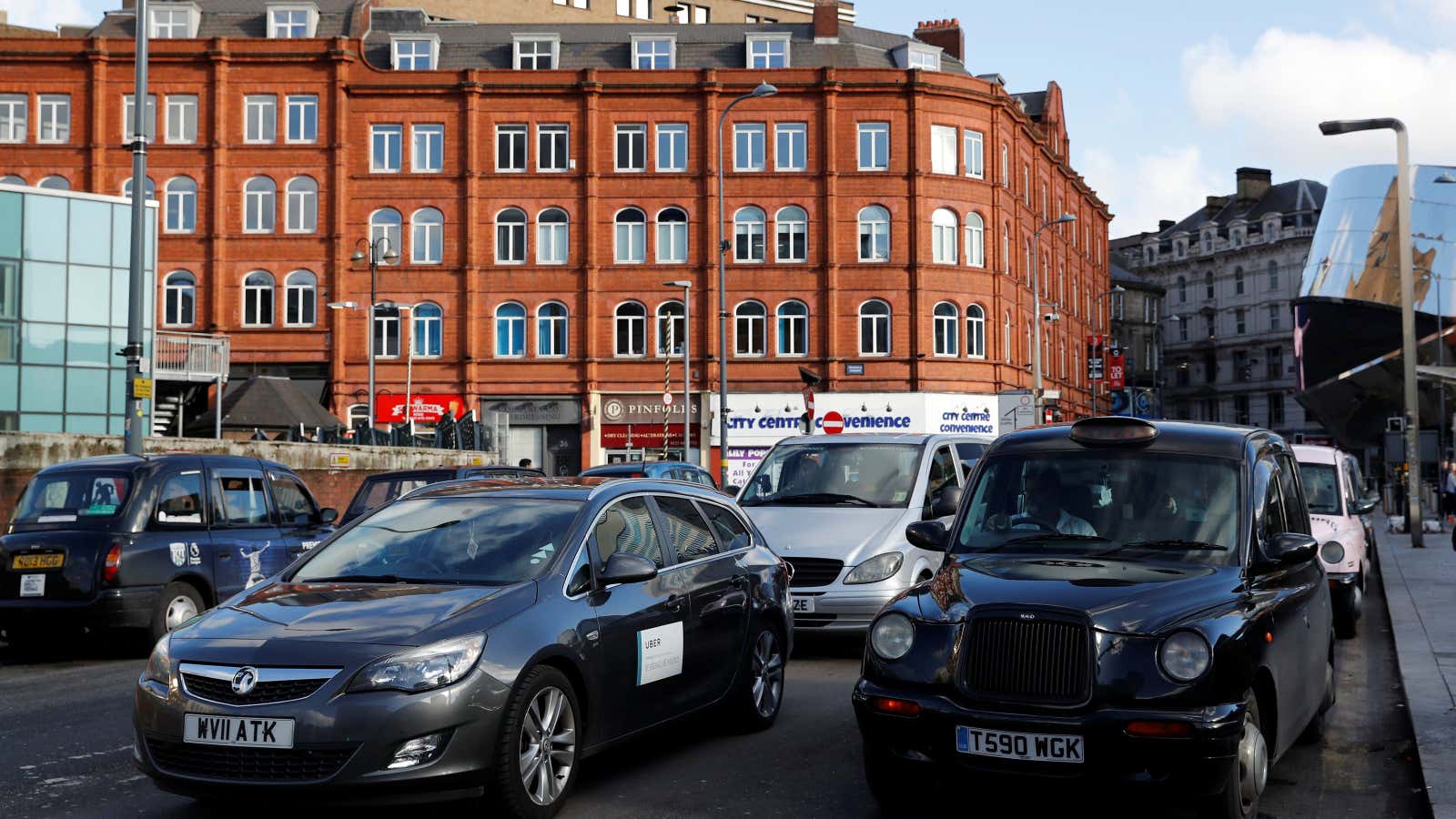Birmingham, England, the industrial city once known as a center of the UK’s auto industry, has just unveiled a new transport plan that leaves little room for cars. The city of 1.15 million is attempting to substantially change the way people get around by making new investments in public transportation, cycling, and pedestrians, and de-prioritizing personal vehicles by putting tight restrictions on where they can drive. The goal is to make Birmingham a city of “low-traffic” neighborhoods.
The plan divides the city center into seven segments, the downtown core and six surrounding areas, where cars may travel in locally but may not move between. The only way to get from one segment to another would be via a ring road that runs around the perimeter. This is intended to reduce congestion on city streets by eliminating long car journeys, and encouraging some would-be drivers to ditch their car entirely. Investments would also be made to pedestrianize streets and improve rail and bus rapid transit in the city center, to make these options more accessible to people who would otherwise drive.
City council member Waseem Zaffar, who leads transportation and environmental initiatives for the city, sees this plan as an investment in near and long-term goals. As the city prepares to host the Commonwealth Games—the international sporting event that brings together nations part of the British Commonwealth—next year, leaders want to prioritize public transport in getting visitors around the city. Even more pressing is Birmingham’s need to reduce transportation emissions order to reach its goal of carbon neutrality by 2030. The city sees shifting habits away from personal vehicles as the only way to achieve that goal.
“What we’re trying to do is reset the relationship [with cars],” says Zaffar. He points out that Birmingham’s population is expected to grow by 150,000 in the next decade, and that growth under the current circumstances will mean more gridlock, and worse environmental outcomes for the whole city.
“It’s about how we can get a cultural change and reduce the over-reliance on cars, and increase the reliance on public transport, and walking and cycling.”
How Birmingham is planning a more car-free life
In a city where a quarter of car trips are currently less than one mile according to Zaffar, removing cars from the fabric of everyday life will be a challenge. In managing this transition, officials have tried to account for travel needs that aren’t easily met with a bicycle or public bus.
Package deliveries to businesses and residences will still need to happen, and while delivery vehicles won’t be allowed to cross between segments, the city has proposed repurposing parking spaces as loading zones, and creating designated drop-off and pick-up points for better consolidation. To solve the last-mile solution for individual journeys that can’t be completed by bus, the city sees a role for ridesharing, both in terms of municipal government partnerships with rideshare companies, and also expanded use of citizen carpool clubs.
European cities are using physical boundaries to restrict car use
With its new low-traffic transportation plan, Birmingham joins the ranks of European cities trying to reduce the climate impact of cars by pushing them out of the city center.
London was an early adopter of this strategy; in 2008, in an effort to reduce air pollution, London established its first low emission zones, places where the heaviest-polluting diesel-fuel vehicles cannot drive. Today, most of the Greater London area is a designated low emission zone year-round. More than 250 cities across the EU have adopted low-emissions zones.
Paris has made moves to restrict nearly all vehicle traffic in the city center by 2022, and Brussels has announced that it would ban all diesel vehicles from the capital region by 2025, and all gasoline vehicles by 2030.
As national and city governments around the world grapple with how to curb carbon emissions from transportation and move away from fossil fuels, different places are coalescing around different strategies. In the United States—a nation of cities built for cars—there has been a push to switch to electric vehicles and build out infrastructure to support it. Europe is approaching decarbonization from the other end—reducing the role of cars overall in people’s lives, and encouraging them to choose mass transit, or their own two feet.
Birmingham’s leadership cabinet will vote on Oct. 12 on whether to formally adopt the new transportation plan.
